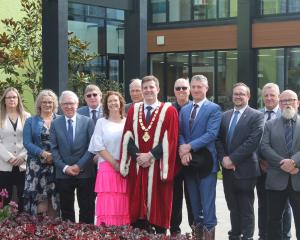Southern councils should look to build bridges in bulk to cut costs and have a ready supply available, a transport meeting was told late last month when the Otago/Southland Regional Transport committee met in Gore.
The committee discussed the case of Southland District Council and how it had to work through the New Zealand Transport Agency conditions to secure funding for bridge building.
That led to a wider discussion about bridges and how many of them would have to be replaced in the coming years.
A separate report, presented to the committee at the meeting said bridges in the South Island were ageing, 73% of those on the national state highway network were built before 1980 and potentially due for renewal.
It was difficult to get specific data on local road bridges, but it was thought there were 5816 bridges on the local transport network, the report said.
Many of them were national resilience programme business cases as most at risk to be exposed to significant natural hazards.
"With such critical transport infrastructure being built nearly half a century ago, there is a substantial risk that infrastructure is no longer fit for purpose, sustainable, or economic to continue maintaining," the report said.
"The increase of severe weather events due to climate change makes a clear case for revisioning the build location and specifics of our bridges in the South Island.
"Early resilience investment reduces the need for significant external emergency grant funding to support recovery from severe weather events.
"It is critical that we begin considering bridge upgrades in conjunction with resilience upgrades and significant road developments.
"This will ensure works are done together in a timely and efficient manner and make certain that bridging infrastructure is upgraded accordingly with the network."
Dunedin city councillor Jim O’Malley questioned if there was an ability to build a series of bridges and have them sitting ready to go when they are needed.
Council engineers at the meeting said decks and slabs could be produced in significant numbers but the foundation of each bridge would have to be individually designed.
Southland District Council roading engineer Hartley Hare said the reality was manufacturers did not just make bridges, they made a lot of other things and councils would have to join the queue.
Gore roading manager Murray Hasler said the foundations were the most expensive part of a bridge.
Queenstown Lakes deputy mayor Quentin Smith said in his district, bridges such as that at Arthurs Point were very complex and could not be quickly made.
Many councils did not have the expertise to design and build these bridges.
Mr Hasler said most councils had bridge consultant specialists who offered the knowledge when building bridges.
Committee chairwoman Kate Wilson said the government was looking to have work streams to create efficiencies.
The committee voted to accept the report.











